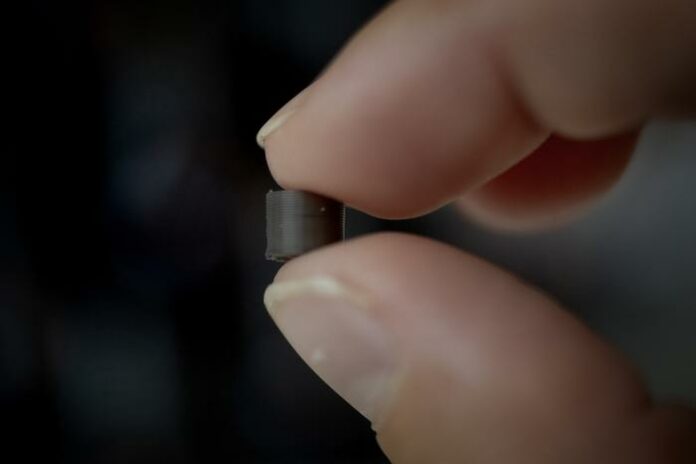
As part of a multi-year project, researchers at Chalmers University of Technology in Sweden have developed 3D-printed optical hydrogen sensors that could play an important role in the transition to green energy and industry. The research team at Chalmers University of Technology is quite advanced in research dedicated to hydrogen.
Remember, last year how we discussed the role of AM in driving hydrogen fueled gas turbines?
In this specific case, the interest in plasmonic metal nanoparticles has driven this research and has led to the development of a plasmonic plastic – a type of composite material with unique optical properties that can be 3D-printed.
What makes plasmonic metal nanoparticles so special is their ability to interact strongly with light. This makes them useful for a wide range of applications: as optical components for medical sensors and treatments, in photocatalysis to control chemical processes, and in various types of gas sensors.
As always, it all starts with a single question: what if we could produce large volumes of plasmonic metal nanoparticles in a sustainable way that would make it possible to manufacture three-dimensional plasmonic objects?
The properties of plastic materials mean that they can be shaped into almost any form, are cost-effective, have upscaling potential, and can be 3D-printed. The new materials consist of a mix (or composite) of a polymer and colloidal, plasmonically active, metal nanoparticles. With these materials, it would be possible to 3D-print objects of anything from a fraction of a gram up to several kilograms in weight.
3D-printed hydrogen sensors
Plasmonic sensors that can detect hydrogen are the target application for this type of plastic composite material that the researchers chose to focus on in their project. In doing so, they have pioneered an entirely new approach in the field of optical sensors based on plasmons, namely being able to 3D-print these sensors.
“Different types of sensors are needed to speed up development in medicine, or the use of hydrogen as an alternative carbon-free fuel. The interplay between the polymer and nanoparticles is the key factor when these sensors are fabricated from plasmonic plastic. In sensor applications, this type of plastic not only enables additive manufacturing (3D printing), as well as scalability in the material manufacturing process, but has the additional important function of filtering out all molecules except the smallest ones – in our application, these are the hydrogen molecules we want to detect. This prevents the sensor from deactivating over time,” says Christoph Langhammer, professor at the Department of Physics, who led the project.
“The sensor is designed so that the metal nanoparticles change colour when they come in contact with hydrogen, because they absorb the gas like a sponge. The colour shift in turn alerts you immediately if the levels get too high, which is essential when you are dealing with hydrogen gas. At too high levels, it becomes flammable when mixed with air,” says Christoph Langhammer.
Remember, you can post free of charge job opportunities in the AM Industry on 3D ADEPT Media or look for a job via our job board. Make sure to follow us on our social networks and subscribe to our weekly newsletter : Facebook, Twitter, LinkedIn & Instagram ! If you want to be featured in the next issue of our digital magazine or if you hear a story that needs to be heard, make sure to send it to contact@3dadept.com





